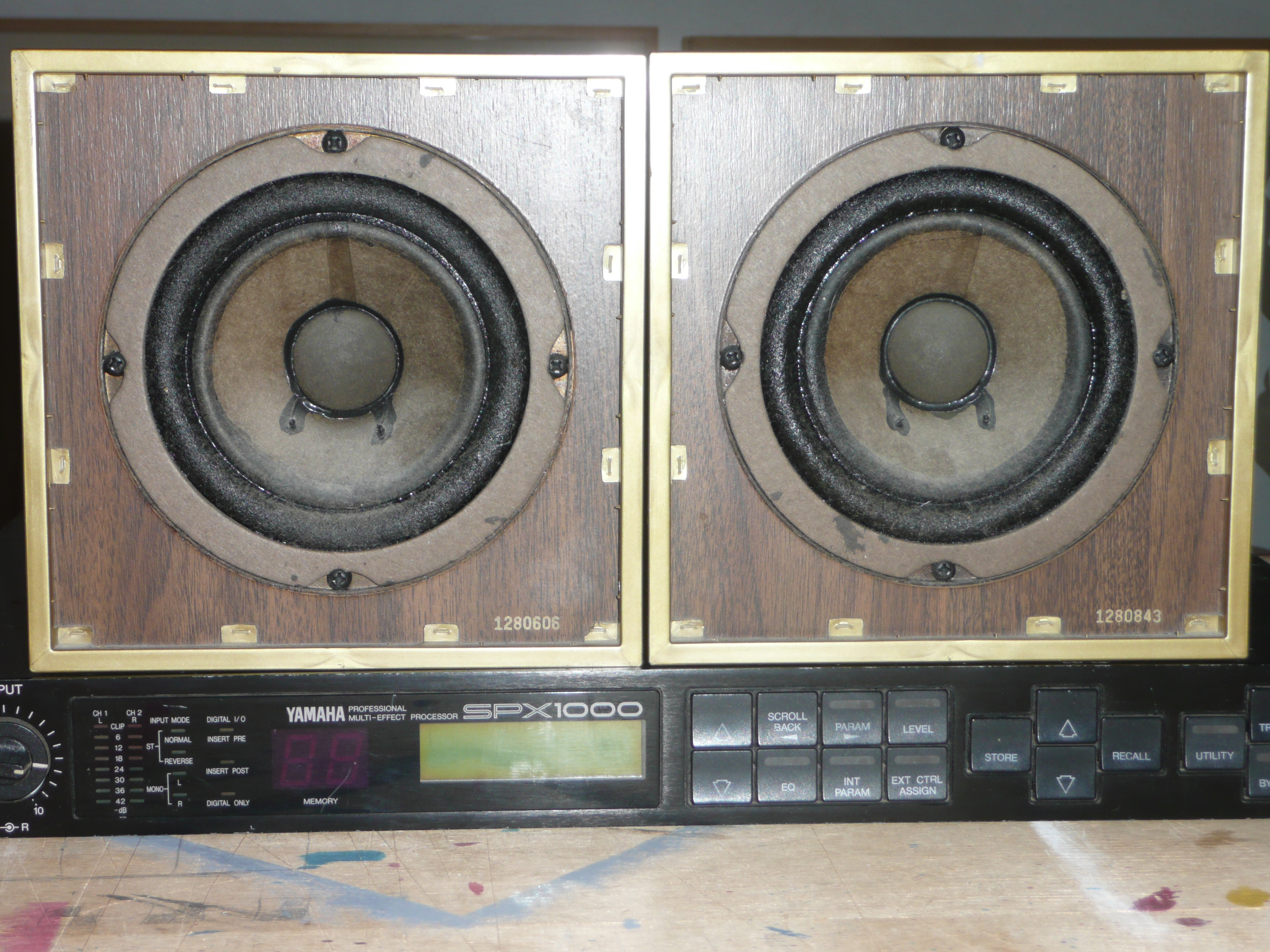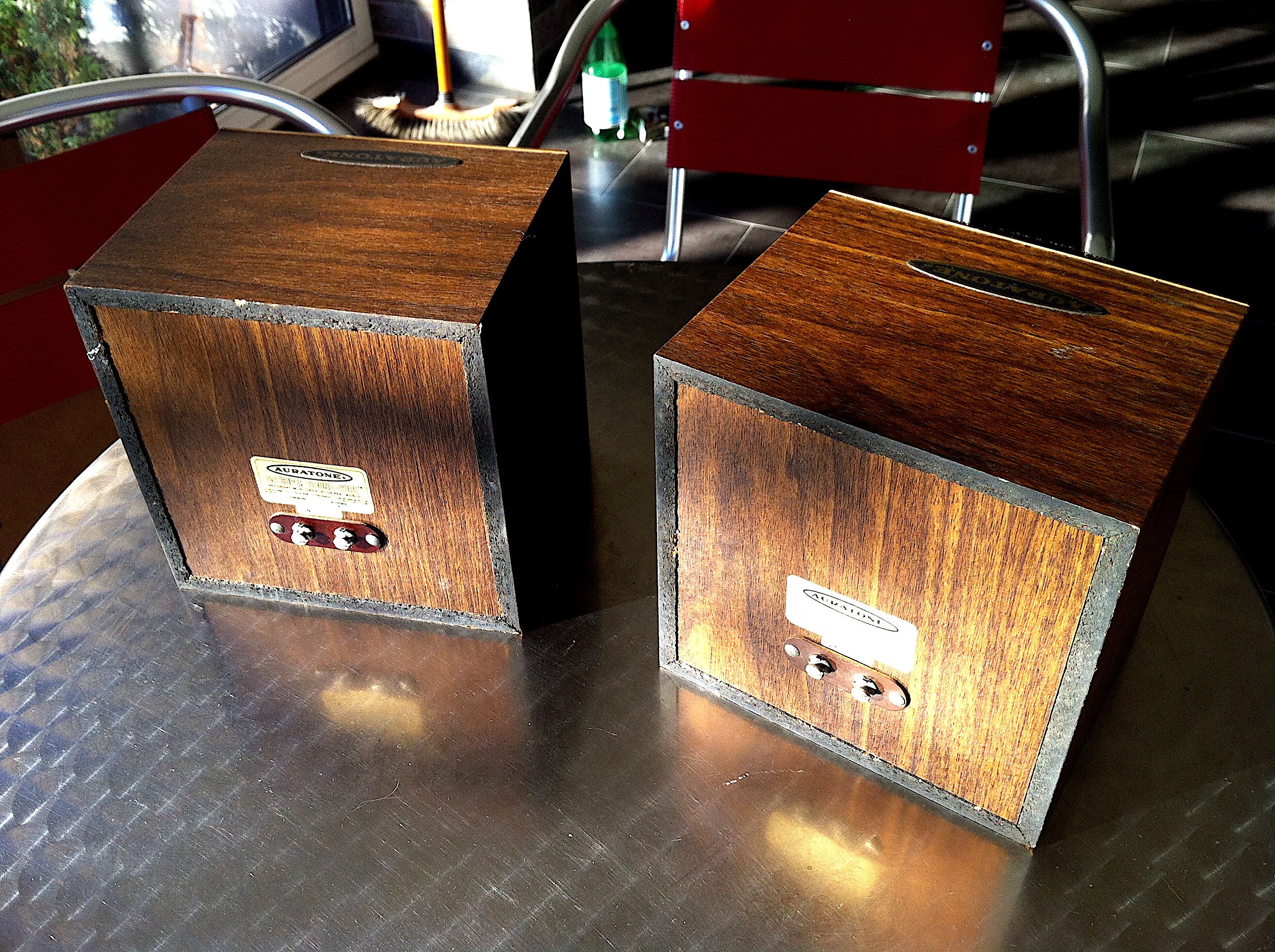

The difference between the two Auratones, in terms of balance, is also noticeable. There’s obviously no comparison between the two brands and the listening test only confirms what the measurements had shown. We then proceeded to listen to some songs we know by heart, starting with Johnny Cash’s rendition of “Hurt.” The first thing we noticed is that the Avantones are less accurate and well-balanced than the Auratones, and their dynamic response isn’t as big. The 2015 model displays a slight skew towards the high end. In fact, the new ones seem less well-balanced than the old pair, whose lows are at almost the same level as the highs. When considering the high end, the 2015 Auratones seem to be better off than the vintage ones we have, and we should also note that the overall balance is somewhat different. The results are below: in red are the Avantones, in blue the Auratone 5PSC and in green the new Auratones. We started by taking measurements at the main listening point. The passive speakers were driven with a Crown D-75A amp and we did all the tests (in mono) in the control room of U.F.O Studio in Paris, France, thanks to the hospitality of Alexandre Mazarguil.

Since there’s not much to add about these 2014 5Cs, we decided to compare them to two similar models: the Auratone “vintage” 5PSC passive speakers (a model which, surprisingly, Auratone doesn’t carry anymore) and the MixCubes active speakers by Avantone (a company established in 2003 by Ken and Sue Avant). The 5Cs were not always exactly the same: those from the '70s were, generally speaking, a bit more brilliant than those from the '80s, so Auratone had to choose which way to go for the new 5Cs, which ended up being more like the '80s model, with a bit more high end and low end, according to the manufacturer. The speakers are magnetically shielded, so you can take out again your old CRT monitors, tape machines and HDDs without any concerns.

Auratone recommends a 25-Watt RMS/50-Watt Peak (into 8 Ohms) amp. This means you will need an external amp connected to the binding posts on the rear to drive them.
#VINTAGE AURATONE 5C DRIVER#
The single 4.5-inch driver sits at the center of the front panel of the passive speaker. These small cubes are 6" 1/2 × 6 1/2" × 6" (16.5 × 16.5 × 15.2 cm) and feature mahogany veneer (and a sealed MDF cabinet) on all four sides, just like that old car your dad used to have and you loved so much. Fortunately, he didn’t take his production secrets to the grave with him and his grandson Alex Jacobsen was able to carry on with his work when he took over the business.Ģ014 marked the return of the 5Cs, which are still 100% made in the United States. The most famous of such speakers are the 5Cs manufactured by Auratone, a company established in 1958 by Jack Wilson who actively marketed his famous speakers until he passed away at 84, in 2005. These small speakers allow the sound engineer to focus on the most important things and make sure that the mix “translates” correctly to any car stereo or budget home audio system. Because after all, the average Joe usually has a humble listening system which can only partially reproduce the frequency spectrum and dynamics of any music production. The goal of these “grot boxes” was to provide a perception of sound closer to that of a regular listener. The '70s and '80s, however, saw a new trend begin with more modest speakers becoming a must in every studio. For years, the tendency in recording studios was to always look for bigger, more powerful and more accurate speakers.


 0 kommentar(er)
0 kommentar(er)
